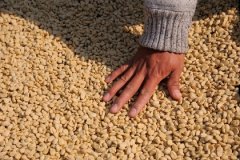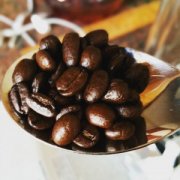History, culture and story allusions of sacred boutique beans in Las Haas Manor, Costa Rica

For professional baristas, please follow the coffee workshop (Wechat official account cafe_style)
History, culture and story allusions of sacred boutique beans in Las Haas Manor, Costa Rica
Ras Lajas Manor Black Honey treats Finca Las Lajas Black Honey
■ country: Costa Rica
■ producing area: central Valley
■ altitude: 1300-1500 m
■ treatment: black honey treatment
■ level: SHB
■ varieties: Kaddura, Kadoui
■ flavor description: black sugar, caramel, syrup, long and full sweetness, Body thick
Treatment of Finca Las Lajas Red Honey with Red Honey in La La Haas Manor
■ country: Costa Rica
■ producing area: central Valley
■ altitude: 1300-1500 m
■ treatment: red honey treatment
■ level: SHB
■ varieties: Kaddura, Kadoui
■ Flavor description: tropical fruit, coffee fruit and wine have long aromas.
Treatment of Finca Las Lajas Yellow Honey with Yellow Honey in La La Haas Manor
■ country: Costa Rica
■ producing area: central Valley
■ altitude: 1300-1500 m
■ treatment: yellow honey treatment
■ level: SHB
■ varieties: Kaddura, Kadoui
■ flavor description: honey, tropical fruit, maple syrup, melon
Ras Lajas Manor Black Pearl Finca Las Lajas Perla Negra
■ country: Costa Rica
■ producing area: central Valley
■ altitude: 1300-1500 m
■ treatment: insolation
■ level: SHB
■ varieties: Kaddura, Kadoui
■ flavor description: pineapple, tropical fruit, wine, pomegranate
Tu-Lars Black Soul Ras Lajas Manor Black Soul Finca Las Lajas Alma Negra
■ country: Costa Rica
■ producing area: central Valley
■ altitude: 1300-1500 m
■ treatment: insolation
■ level: SHB
■ varieties: Kaddura, Kadoui
■ flavor description: dark chocolate, cream, fruit, Body thick
Honey treatment is one of the mainstream treatment methods of high-quality coffee raw beans. In the previous article, the author has introduced the coffee raw bean treatment method, and the honey treatment method is the latest one of the mainstream treatment methods at present. It is derived from the Brazilian half-sun treatment (also known as semi-washing treatment).
Costa Rica is the first country to use coffee raw soybean honey treatment. There are three major coffee producing areas in Costa Rica, namely, Tarazu, the central valley and the western valley.
Located in the Central Valley (Central Valley), La Lajas Manor is the first coffee plantation in Costa Rica to systematically study and use refined sun and honey treatments. La Lajas Manor is between 1250 and 1500 meters above sea level and produces more than 50, 000 kilograms of raw coffee beans each year.
The treatment of boutique coffee honey: it is used to the extreme by Ras Lajas Manor.
Las Lajas Manor (picture from the Internet)
The standards of La Lajas Manor are very stringent, using a sweetness detector to screen qualified coffee fruits from the harvest stage, and often improving the processing equipment to meet the needs of refined sun and honey processing methods.
The manor has made extreme improvements to the honey treatment method. It has previously shared with you the standard treatment of yellow honey, red honey and black honey. Yellow honey retains less than 50% of the pectin after peeling, while red honey refers to the process of retaining at least 80% of the pectin after peeling, and black honey refers to the process of retaining almost all of the pectin, then drying and fermenting.
Ruslaas' yellow honey, red honey and black honey treatment is very unique, first of all, remove the peel, and retain 100% of the pectin, and then air, rely on different turning time to control the formation of coffee flavor.
The treatment of boutique coffee honey: it is used to the extreme by Ras Lajas Manor.
Sun treatment
Their sun treatment is also very different, through pure exposure or alternating exposure time and shading time to control the formation of coffee flavor.
Here, I would like to briefly introduce the two representative beans of La La Haas Manor, which I like very much, one is black honey treatment, and the other is black pearl.
The treatment of boutique coffee honey: it is used to the extreme by Ras Lajas Manor.
Beans treated with Laslajas black honey (micro-baked)
The black honey treated beans and black pearl beans in La La Haas manor can be roasted in a slightly medium degree. when baked properly, the black honey treated beans have very obvious nutty aroma, black sugar flavor, excellent sweetness and smooth and thick taste.
The treatment of boutique coffee honey: it is used to the extreme by Ras Lajas Manor.
Black Pearl Coffee (Micro-medium roasting)
Black pearl coffee beans are sun-treated coffee beans that, when roasted properly, have obvious cocoa aromas, sweet and sour fruits, and an alcoholic finish.
Las Lajas Estate Perla Negra
Country: Costa Rica
Product name: black Pearl of La Lajas Manor
Producing area: central valley
Grade: SHB
Treatment method: sun treatment
Altitude: 1300-1500 m
Variety: Caturra & Catuai
In the exquisite sun and honey treatments that are now quite popular in Costa Rica
La Lajas Manor is one of the earliest manors to carry out systematic research and treatment.
It has been a favorite coffee farm for global buyers for many years.
La Lajas Manor is currently owned by Francesca, the third-generation owner of the manor.
(Francisca Cubillo)
Co-operated with his wife Oscar
The manor is located in the central valley not far from the capital.
(Central Valley)
Quite close to Poas Volcano Volcano
The altitude is between meters, and the annual output is about 55200 kilograms.
Many years ago, Francesca, the owner of the estate,
I have been hoping to improve the flavor of the coffee in the manor.
At that time, the vast majority of coffee farmers in Costa Rica
The traditional washing method is generally adopted.
To supply the needs of the American and European markets, so the landowners began to study
And improve a lot of equipment in the manor to better meet the needs of sun and honey coffee processing.
During the harvest phase, the landowner uses a sweetness detector (BRIX).
Screening the red fruits of coffee up to the standard
At the same time, set up its own washing treatment station for coffee treatment.
Finally, it is placed on the African scaffolding for subsequent exposure.
In the coffee processed at the Ras Lajas manor
The landowner treats honey and sun-dried coffee
It is divided into many different items by the expression of flavor.
In the case of honey treatment, farmers in Costa Rica
For the most part, the amount of residual pulp is controlled by the peeling machine at the water washing station.
But Laslajas Manor decided to take a different approach.
That is, to retain the highest proportion of 100% of the flesh.
But control the time of exposure and turning on the African scaffolding.
To show different coffee flavors.
In the honey treatment, the manor owner divides the coffee into yellow honey, red honey and black honey.
Yellow honey treatment:
After removing the pericarp, the peel was placed on the African scaffolding in the early morning and turned immediately.
Red honey treatment:
After the peel is removed,
Unified in the early morning placed on the African scaffolding exposure until after noon before turning.
Black honey treatment:
After the peel is removed,
Unified in the early morning placed on the African scaffolding exposure until the afternoon before turning.
As for the rule of sun treatment,
Plastic cloth shading way to deal with a lot of more detailed flavor performance black pearl:
The red fruits of the harvested coffee are placed in the early morning
The African scaffolding is regularly turned and exposed until the moisture content is 11.5%.
The whole process will take about two weeks.
Black Soul: the red fruits of the harvested coffee are placed on the African scaffolding in the early morning.
Turn regularly for exposure one day and shade with plastic cloth for one day
Stand until the moisture content is 11.5%, and the whole process takes about three weeks.
At the same time, the manor owner is strict in the fertilizer materials of the manor.
All processes are required to be planted and fertilized in accordance with organic standards.
Organic compost is used throughout the manor, and organic standards are extended to include soil,
Shade tree and washing plant procedures.
After years of hard work, the Ras Lajas Manor
Has passed the Japanese JAS, American USDA and NOP organic certification.
The Black Pearl of La Lajas Manor
Everyone's taste is not necessarily what they like.
You can consider buying a small amount and trying different baking degrees.
Soy beans in an explosion
Drop the beans at the end of the explosion.
Drop the beans from the end of the first explosion to the second explosion.
Touch the beans under the second explosion.
Put the beans into the second explosion for 10-15 seconds
The second explosion of dense beans
I hope you bakers can find a more favorite flavor.
*
Costa Rica Costa Rica
Population: 4586000
In the past Costa Rica has successfully sold its coffee according to the name of the region where it is produced. However, tastes vary from region to region, so it is well worth exploring each different region to see what kind of coffee beans they can produce.
CENTRAL VALLEY
The Central Valley, the capital of Costa Rica, San Jose, is located here, which is the most densely populated area. It is also an area that has been growing coffee for the longest time. It is usually divided into subregions of San Jos é Heredia and Alajuela. There are three major volcanoes in the region: lrazu,Barva and Boaz affect topography and soil.
Altitude: 900-1600m
Harvest: November-March
WEST VALLEY
West Valley, the first farmer to settle down in the 19th century, brought coffee. The region is divided into six subregions around the urban centres of San Ramon, Palmares, Naranjo, Greece, Sarchi and Artenas. There is a specific coffee variety in Sarchi called Villa Sarchi. The highest elevation in the area is around Naranjo, and some amazing coffee can be found at the altitude of the area.
Altitude: 700-1600m
Harvest: October-February
TARRAZU
The Tarrazu producing area has a long-standing reputation guarantee, and for many years, the coffee from here can almost be regarded as a high-quality grade. But the coffee comes from different farms and is then mixed into large batches. However, over the years, Tarrazu's brand has accumulated sufficient strength, and coffee produced from outside the region is also marked with Tarrazu to increase its value. Costa Rica's tallest coffee farm is located in this area, like many other areas, where profits are made during the obvious dry season harvest.
Altitude: 1200-1900m
Harvest: November-March
La Slajas Manor, Costa Rica
CostaRica Las Lajas Estate of La Lajas Manor, Costa Rica
Among the exquisite sun and honey treatments that are quite popular in Costa Rica, La Lajas Manor is one of the first estates to begin systematic research and treatment, and has been a favorite coffee farm for global buyers for many years. La Lajas Manor is now jointly run by the third-generation manor owner Francisca Cubillo and his wife Oscar. The estate is located in the Central Valley producing area (Central Valley), not far from the capital, quite close to the Poas Volcano volcano, with an annual output of about 55200 kg at an altitude of 1,250 Murray 1500 meters.
Many years ago, Francesca wanted to improve the flavor of coffee on the estate. At that time, most coffee farmers in Costa Rica used traditional washing methods to supply the demand of American and European markets. Therefore, the owner began to study and improve many equipment in the estate to better meet the needs of sun and honey processing coffee. During the harvest phase, the farm uses a sweetness tester (BRIX) to screen the coffee red fruits that meet the standard, and at the same time sets up its own washing station for coffee treatment, and finally places them on African shelves for subsequent exposure.
In Las Lajas estate, the estate owner divides the honey treated and sun treated coffee into a variety of different varieties by flavor performance. In the honey treatment method, Costa Rican farmers mostly control the residual pulp amount by peeling machines in washing stations, but Las Lajas estate decided to adopt another method, that is, to retain the highest proportion of pulp but control the exposure and stirring time on African shelves to present different coffee flavor performance. In honey processing, the plantation owner separates coffee into yellow honey, red honey and black honey.
■ Yellow honey treatment:
After removing the peel, place it on an African trellis in the early morning and turn it immediately.
■ Red honey treatment:
After removing the peel, place it on an African trellis in the morning and expose it to the sun until noon.
■ Black honey treatment:
After removing the peel, place it on an African trellis in the morning and expose it to the sun until the afternoon.
As for the sun treatment method, the plastic sheet shade is used to treat many more detailed flavor expressions.
■ Black Pearl:
Harvested coffee berries are placed on African trellises in the early morning and regularly turned for insolation until the moisture content reaches 11.5%. The whole process takes about two weeks.
Black Soul:
Harvested coffee berries are placed on African trellises in the early morning. They are turned regularly one day and exposed to sunlight one day until the moisture content is 11.5% under the shade of plastic cloth. The whole process takes about three weeks.
At the same time, the manor owner strictly requires all processes to be planted and fertilized according to organic standards. The whole manor uses organic self-made compost, and the organic standards are extended to include soil, shade trees and washing treatment plant procedures. After many years of efforts, Las Lajas Estate has passed the Japanese JAS, the United States USDA and NOP organic certification.
Important Notice :
前街咖啡 FrontStreet Coffee has moved to new addredd:
FrontStreet Coffee Address: 315,Donghua East Road,GuangZhou
Tel:020 38364473
- Prev

Costa Rica Las Haas Manor single bean species, brand recommendation and manor introduction
Professional barista communication please follow the coffee workshop (Wechat official account cafe_style) Costa Rica Las Haas manor single bean species, brand recommendation and manor introduction honey treatment is one of the mainstream processing methods of high-quality coffee raw beans. In the author's previous article, there has been some introduction to the treatment of raw coffee beans, and the honey treatment method is the latest among the mainstream treatment methods.
- Next

Differences, distinctions and prizes of single beans at Diamond Hill Manor in Costa Rica
For the exchange of professional baristas, please pay attention to the coffee workshop (Wechat official account cafe_style) Costa Rica Diamond Hill Manor single bean differences, distinctions and awards Costa Rica coffee cultivation was introduced from Cuba in 1779 in 1820 before the first export of coffee, there are about 32000 coffee farmers, the average planting area per farmer is less than one hectare.
Related
- Does Rose Summer choose Blue, Green or Red? Detailed explanation of Rose Summer Coffee plots and Classification in Panamanian Jade Manor
- What is the difference between the origin, producing area, processing plant, cooperative and manor of coffee beans?
- How fine does the espresso powder fit? how to grind the espresso?
- Sca coffee roasting degree color card coffee roasting degree 8 roasting color values what do you mean?
- The practice of lattes: how to make lattes at home
- Introduction to Indonesian Fine Coffee beans-- Java Coffee producing area of Indonesian Arabica Coffee
- How much will the flavor of light and medium roasted rose summer be expressed? What baking level is rose summer suitable for?
- Introduction to the characteristics of washing, sun-drying or wet-planing coffee commonly used in Mantenin, Indonesia
- Price characteristics of Arabica Coffee Bean Starbucks introduction to Manning Coffee Bean Taste producing area Variety Manor
- What is the authentic Yega flavor? What are the flavor characteristics of the really excellent Yejasuffi coffee beans?

